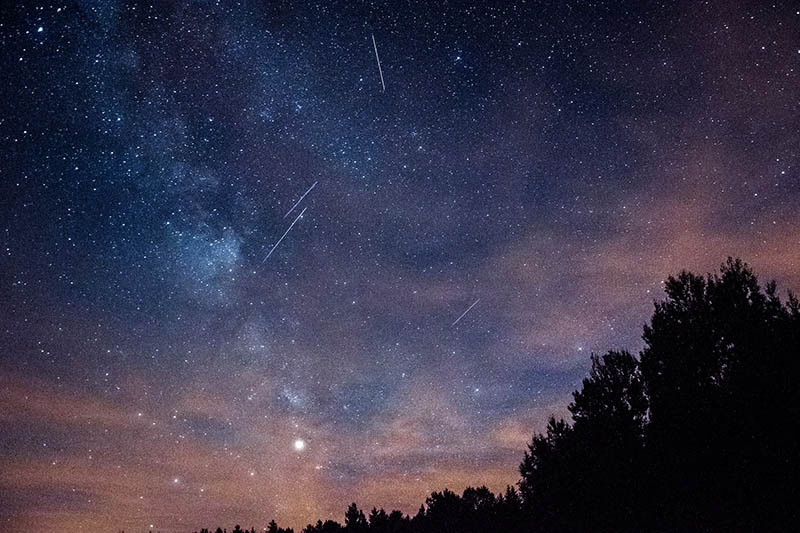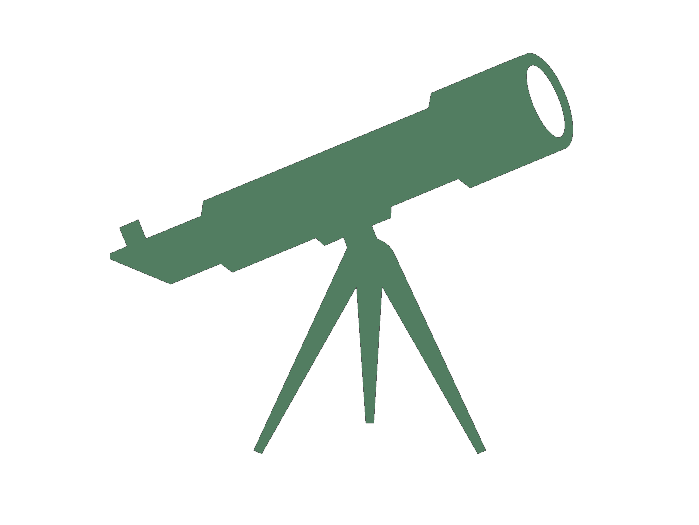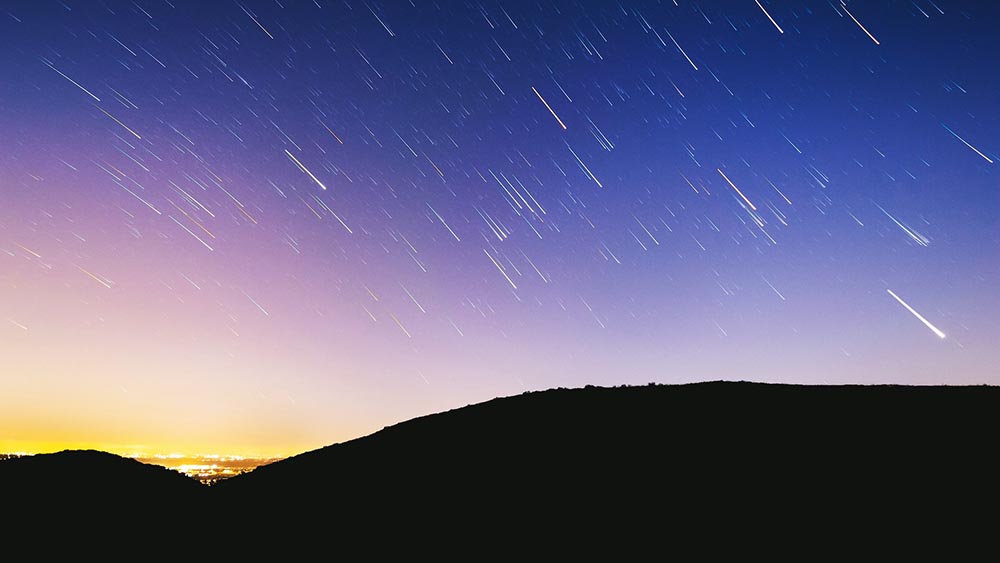How Often Do Meteor Showers Happen? The Fascinating Answer!
Last Updated on

On a dark and clear night, it’s often possible to see a shooting star or two, especially if you live in a rural or wooded area absent of city lights. And if you’re lucky, you’ll be able to catch a meteor shower or two while you’re hanging outdoors during the night.
Meteor showers often resemble shooting stars, but these bright luminance streaks are so much more. Leaving behind a fiery trail of sediment and other fast-traveling debris, meteor showers can be a true sight to behold if you happen to catch one, and they happen more often than you may realize…there is a meteor shower almost every single month of the year!

How Often Do Meteor Showers Happen?
You may be surprised to learn that there is a meteor shower almost every single month. And there are approximately 30 visible meteor showers each year, though some are more visible than others. The most common meteor showers (Leonids and Perseids) occur in November and mid-August.
These meteor showers are especially bright, and many people often flock to high-altitude, low-light areas just to get a peek at them. A large meteor shower can yield over one shooting star per minute.

What Is a Meteor Shower and What Causes Them?
We all know that Earth constantly orbits around the Sun, rotating the entire time. Well, a meteor shower will occur when Earth travels through debris and leaves a trail behind in its wake during this process. This debris is composed of ice, dust, and space rocks. Whenever Earth runs into these objects, we’ll witness the aftermath in the form of a beautiful meteor shower.
How Are Meteor Showers Named?
Interestingly, meteor showers are actually named after the specific star constellation from which they come. For example, the Perseids meteor showers originate from the Perseus star constellation and the Leo constellation is responsible for the Leonids showers. And of course, you have the popular Geminids, which originate from the Gemini constellation.

Exactly How Big Are Meteors?
The size of a meteor shower can vary, depending on the constellation and the time of year that it occurs. However, most meteor showers are usually small, consisting of just a single pebble or grain of sand. Because of their small size, they burn up almost immediately once they hit Earth’s atmosphere, never actually touching the ground. However, other meteors that don’t burn up completely once they hit the atmosphere will actually fall to the ground, at which point they’re classified as “meteorites.”
Meteorites, depending on their size, can cause a lot of destruction and leave huge craters in the ground once they crash. In fact, the Chesapeake Bay was actually formed by a huge meteorite that hit earth over 30 million years ago.
Which Meteor Showers Are the Easiest to View?
A meteor shower’s brightness depends on its speed and its size. So, the bigger and faster it is, the brighter the shower will be, which is why the larger meteor showers are absolutely spectacular to view. The Perseids meteor shower is usually the brightest one of the year.
It’s created by anywhere from 50 to over 100 very fast-moving meteors. Other notable meteor showers that attract huge crowds include the Quadrantids, the Leonids (which has some of the fastest meteors), and the Orionids.

What Is the Best Way to See Meteor Showers?
Meteor showers occur all throughout the year and the best night to see one is when these showers are at their peak. You can check out the American Meteor Society’s site to view their meteor shower calendars and help plan out your trip.
It’s best to find a dark place that’s a few miles away from any sources of light. Also, if the Moon is nearly full or full, it may be more difficult to see a meteor shower because of the light that it casts upon the sky.
You don’t need any extra equipment or to look in any particular direction; you can simply gaze up into the night sky. These shooting stars are usually visible in any part of the night sky.
Can Meteor Showers Cause Damage to Earth?
In many cases, they don’t. The usual meteor shower will burn up long before it hits the earth’s surface. Occasionally, a small amount of debris will make it beyond the earth’s atmosphere, often exploding upon impact, leaving behind small traces of debris on the ground. These meteorites are reported each year and can do damage to personal property and landscapes.

Wrapping Things Up
Meteor showers occur throughout the year, and some are bigger and brighter than others. The brightness and overall visibility of a meteor shower would depend on its size and speed. You can view these meteor showers from remote locations that have little to no lighting, as it’s easier to see them in the night sky.
Featured Image Credit By: Michał Mancewicz, Unsplash
Table of Contents
About the Author Robert Sparks
Robert’s obsession with all things optical started early in life, when his optician father would bring home prototypes for Robert to play with. Nowadays, Robert is dedicated to helping others find the right optics for their needs. His hobbies include astronomy, astrophysics, and model building. Originally from Newark, NJ, he resides in Santa Fe, New Mexico, where the nighttime skies are filled with glittering stars.
Related Articles:
Can You Use Binoculars to Look At Stars? How to Choose the Right Pair
15 Crucial Facts About Ultraviolet Rays & the Sun
What Constellation Is Spica In? The Interesting Answer!
10 Interesting Leo Constellation Facts, Myths, and FAQs
15 Interesting Pegasus Constellation Facts, Myths, and FAQs
6 Interesting Sagittarius Constellation Facts, Myths, and FAQs in 2024!
What Are Constellations? Where Did They Come From?
8 Interesting Libra Constellation Facts, Myths, and FAQs
